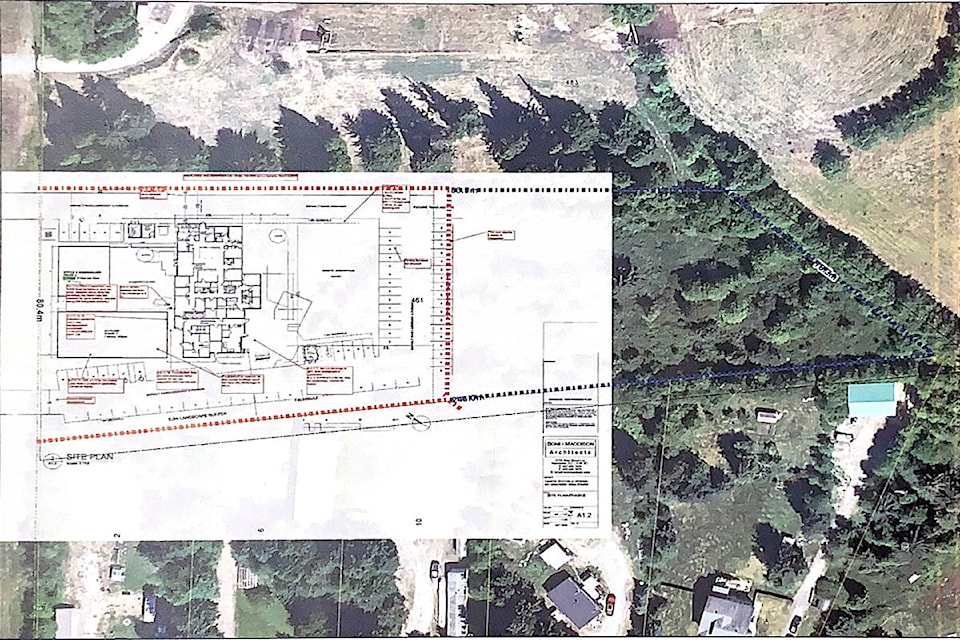The Tamitik Status of Women Association (TSWA) has secured a $42,000 grant from the District of Kitimat to complete the sum it needs to build a fence around the mixed-use residential building being developed at 461 Quatsino Blvd.
During a council meeting on March 29, both council and residents raised concerns about the development proposal application because nothing about the fence was part of the construction budget. In response to the concerns, Anthoni Boni from Boni Madison Architects, who is managing the project for the non-profit society, reassured residents that a fence will surround the building.
However, during the meeting residents and council demanded that an eight-foot-high fence be built on the southwest side of the building, which is over a foot and a half higher than the bylaw requirement, to help buffer noise and light pollution for the residents living on Cranberry Street. That added $38,000 over the original fencing budget.
Residents and council also demanded that a six-and-a-half-foot-high fence be built on the northeastern side of the building, which is also over a foot and a half higher than the original fencing proposal. That added $4,000 in fencing fees.
“I can appreciate if the decision by the district to require such fencing was in the spirit of de-escalation; I am for that, I do not want the contention that has occurred to persist between our agency and the neighbours of Strawberry Meadows,” Michelle Martins, executive director of the Tamitik Status of Woman Association told council May 31 in asking for money to cover the fencing budget shortfall.
“But with that said, I don’t think it’s fair to put such a cost on a non-profit when these types of costs are traditionally shared between neighbours. Nor do I think it’s fair to put that burden on the funders of our project because if our funders deemed this type of fencing to be necessary to the operations were endeavouring to do, it would have been included in the hundreds of stipulations that they required for us to access the funding we are being given for this project.”
Martins also emphasized that any additional funding that TSWA has needs to go to their front-line staff to address their ever-growing caseload.
“Our contingency budget is being used to address the cost inflation that’s been caused by the Covid-19 pandemic. […] Even if Covid-19 were to end tomorrow, that means our industrial section would be ramping up, so would our overall caseload,” Martins said.
“TSWA has been working with a new normal for the last ten years because of the increase in industrial activity in Kitimat. […] What [TSWA] has experienced is on par with decades of research that supports that there is a clear correlation between large scale industrial projects and violence against women.”
Council approved the grant and agreed with Martins, stating they want the project to start as soon as possible.
“Given where we’re at, I’d like to see the project go forward. I don’t think it’s appropriate for the neighbours to be kicking in costs and I think that we’ve debated long and hard about the fence. Those decisions have been made and I think [council] needs to pony up to help bring this project about and create harmony with the neighbours,” Councillor Mario Feldhoff said when following up on his motion to grant the $42,000.
“This project is vitally needed by our community and I think any further delays are just not warranted so if this is what we need to do to keep moving forward, then I fully support this motion,” Councillor Lani Gibson said in support of Feldhoff’s motion.
Phase one of the development will consist of a four-storey transitional housing building of 31 units, including an 18-bed transitional house for women and children fleeing domestic violence. Phase two will include a one-storey 24-hour daycare building with 60 spaces offered in three rooms over a 24-hour period. Tamitik Status of Women will provide services under contract to the provincial government. Boni Maddison Architects will manage construction and the provincial BC Housing agency is paying for the project.
READ MORE: Fence to be erected between housing project and Kitimat homeowners
